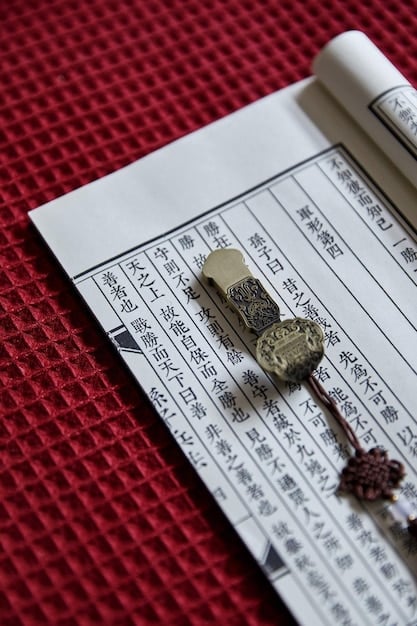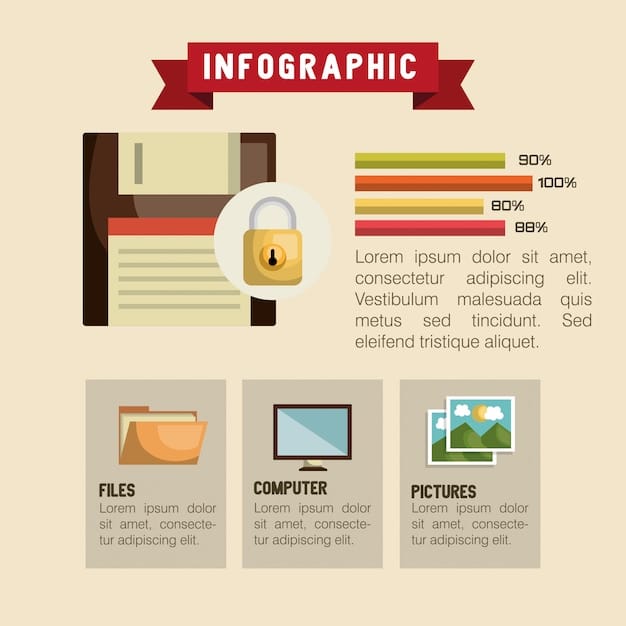Understanding Japanese Product Warranties: A Guide for US Consumers

Understanding Japanese product warranties as a US consumer involves navigating different standards and legal protections, requiring a careful review of terms, potential purchase of extended warranties, and awareness of resources for dispute resolution to protect your purchases effectively.
Navigating the world of consumer electronics and goods from Japan can be exciting, but **understanding Japanese product warranties** as a US consumer is crucial for protecting your investment and ensuring peace of mind should any issues arise.
Understanding the Basics of Japanese Product Warranties
When purchasing products from Japan, whether online or during travels, understanding the warranty that comes with it is essential. Japanese product warranties operate under a different set of rules and regulations compared to those in the US.
This section will delve into the basic structure and components of Japanese product warranties, highlighting key differences and similarities with US warranties.
Key Components of a Japanese Product Warranty
Japanese product warranties, similar to those in the US, typically cover defects in materials and workmanship. However, the duration, scope, and conditions can vary significantly.
Understanding these components is crucial for making informed purchasing decisions and ensuring adequate protection for your products.
- Warranty Period: The length of time the warranty is valid, typically ranging from one to five years, depending on the product.
- Coverage Details: The specific components or issues covered by the warranty, such as parts, labor, or both.
- Exclusions: Circumstances or damages that are not covered by the warranty, such as misuse, accidents, or unauthorized repairs.
- Claim Process: The steps required to file a warranty claim, including documentation, contact information, and authorized service centers.
One notable difference is the emphasis on preventative maintenance and adherence to usage guidelines. Japanese warranties often require strict compliance with the product’s instruction manual to maintain validity. Deviation from these guidelines could void the warranty, making it essential for US consumers to carefully review and adhere to the manufacturer’s recommendations.

Comparing Japanese and US Warranty Laws
Warranty laws differ significantly between Japan and the United States. Understanding these differences is essential for US consumers purchasing products from Japan, as their rights and protections may not be the same.
This section will compare warranty laws in both countries, highlighting the key differences and implications for consumers.
Key Differences in Warranty Laws
In the US, the Magnuson-Moss Warranty Act governs consumer product warranties, setting standards for disclosure, performance, and dispute resolution. Japan, on the other hand, relies more on the Consumer Contract Act and general principles of contract law.
This leads to notable differences in how warranties are offered, interpreted, and enforced.
- Disclosure Requirements: The US has stricter disclosure requirements, mandating clear and conspicuous disclosure of warranty terms.
- Implied Warranties: The US recognizes implied warranties of merchantability and fitness for a particular purpose, providing additional consumer protection.
- Enforcement Mechanisms: The US offers a variety of enforcement mechanisms, including small claims courts and class-action lawsuits.
One of the most significant differences lies in the concept of “reasonableness.” In Japan, warranty claims are often evaluated based on the reasonableness of the consumer’s expectations and the manufacturer’s obligations. This can result in subjective interpretations and outcomes, making it crucial for US consumers to carefully document their interactions and seek legal advice if needed.
Navigating Language Barriers and Translations
One of the most significant challenges US consumers face when dealing with Japanese product warranties is the language barrier. Warranty documents, instructions, and customer service interactions are often in Japanese.
This section explores strategies for overcoming these language barriers and ensuring effective communication.
Tips for Translating Warranty Documents
Accurate translation is essential for understanding the terms and conditions of a Japanese product warranty. Relying solely on machine translation can be risky, as subtle nuances and legal terms may be misinterpreted.
Here are some tips for ensuring accurate translations:
- Professional Translation Services: Hire a professional translator specializing in legal or technical documents for the most accurate results.
- Bilingual Friends or Family: Enlist the help of bilingual friends or family members who are fluent in both Japanese and English.
- Translation Apps and Tools: Use reputable translation apps or tools, but always double-check the results for accuracy and context.
It’s also important to be aware of cultural differences in communication. Direct translations may not always convey the intended meaning accurately. Consider seeking assistance from someone familiar with both Japanese and American business culture to ensure effective communication and understanding.

The Role of Extended Warranties and Insurance
To enhance protection, US consumers buying from Japan might consider extended warranties or insurance policies. These options can cover additional risks and provide peace of mind beyond the standard warranty.
This section explains different extended warranty and insurance options available to US consumers.
Understanding Extended Warranty Options
Extended warranties, also known as service contracts, provide coverage beyond the manufacturer’s warranty period. They can cover repairs, replacements, and other services not included in the original warranty.
Consider the following when evaluating extended warranty options:
- Coverage Scope: Determine what is covered, including specific parts, labor, and potential exclusions.
- Deductibles: Understand any deductible amounts required for each claim.
- Provider Reputation: Research the reputation and reliability of the warranty provider.
Insurance policies, such as accidental damage or theft insurance, can offer additional protection against unforeseen events. These policies may cover damage from accidents, spills, or theft, which are typically not covered by standard warranties. Understanding the terms, conditions, and exclusions of these policies is essential for ensuring adequate protection.
Claiming a Japanese Product Warranty
If a product fails during the warranty period, knowing how to claim it is crucial. This section provides a step-by-step guide for US consumers to initiate and process a warranty claim.
Remember that claiming a Japanese product warranty can be more complex than claiming a US one, due to language, logistical, and legal differences.
Step-by-Step Guide to Claiming a Warranty
The process for claiming a Japanese product warranty can vary depending on the manufacturer and product. However, some general steps apply to most situations:
- Contact the Seller or Manufacturer: Reach out to the seller or manufacturer to report the issue and initiate the claim process.
- Gather Documentation: Collect all relevant documentation, including proof of purchase, warranty documents, and any repair records.
- Submit the Claim: Follow the instructions provided by the seller or manufacturer to submit the claim, including any required forms or documentation.
Clear and concise communication is key to a successful warranty claim. Provide detailed information about the issue, including photos or videos if possible. Be polite but persistent in pursuing your claim. Keeping a record of all communications and documentation can be invaluable if disputes arise. If necessary, consider seeking assistance from a consumer protection agency or legal professional to advocate on your behalf.
Resolving Disputes and Seeking Legal Advice
When warranty claims are denied or disputes arise, US consumers need to know their options for resolution and legal recourse. This section discusses available dispute resolution mechanisms and when to seek legal advice.
Disputes can arise from a myriad of issues, ranging from misinterpretations of warranty terms to disagreements over the cause of product defects.
Understanding Your Options for Dispute Resolution
Several dispute resolution mechanisms can help resolve warranty disputes without resorting to litigation:
- Mediation: A neutral third party facilitates discussions between the consumer and the manufacturer to reach a mutually agreeable resolution.
- Arbitration: A neutral arbitrator hears evidence and arguments from both sides and renders a binding decision.
- Small Claims Court: A simplified court process for resolving disputes involving smaller amounts of money.
Seeking legal advice is crucial when disputes involve significant amounts of money or complex legal issues. A qualified attorney can review warranty documents, assess your legal rights, and advise you on the best course of action. They can also represent you in negotiations, mediation, or litigation if necessary. Early legal intervention can often prevent disputes from escalating and protect your interests effectively.
| Key Point | Brief Description |
|---|---|
| 📝 Warranty Basics | Understand durations, coverage, and exclusions for Japanese warranties. |
| ⚖️ Legal Differences | US and Japanese warranty laws differ; know your rights. |
| 🌐 Language Barriers | Use professional translations for warranty documents. |
| 🛡️ Extended Protection | Consider extended warranties or insurance for extra coverage. |
Frequently Asked Questions
▼
The typical warranty period for Japanese electronics ranges from one to five years, depending on the manufacturer and product type. Always check the specific warranty details.
▼
Whether a Japanese warranty is valid in the US depends on the manufacturer’s policies. Some offer international warranties, but many do not. Confirm before purchasing.
▼
You can translate a Japanese warranty document using professional translation services, bilingual friends, or translation apps. Be sure to verify the accuracy in all cases.
▼
If your warranty claim is denied, gather all documentation, review the reason for denial, and consider mediation or arbitration to resolve the dispute effectively.
▼
US law may offer some protection, but it’s limited. The Magnuson-Moss Warranty Act might not fully apply, so understanding the specific warranty terms is essential.
Conclusion
Understanding Japanese product warranties is critical for US consumers to protect their investments effectively. By familiarizing yourself with warranty basics, legal differences, handling language barriers, considering warranty extensions, and understanding claiming procedures, you can confidently make purchases from Japan and navigate any warranty-related issues.





